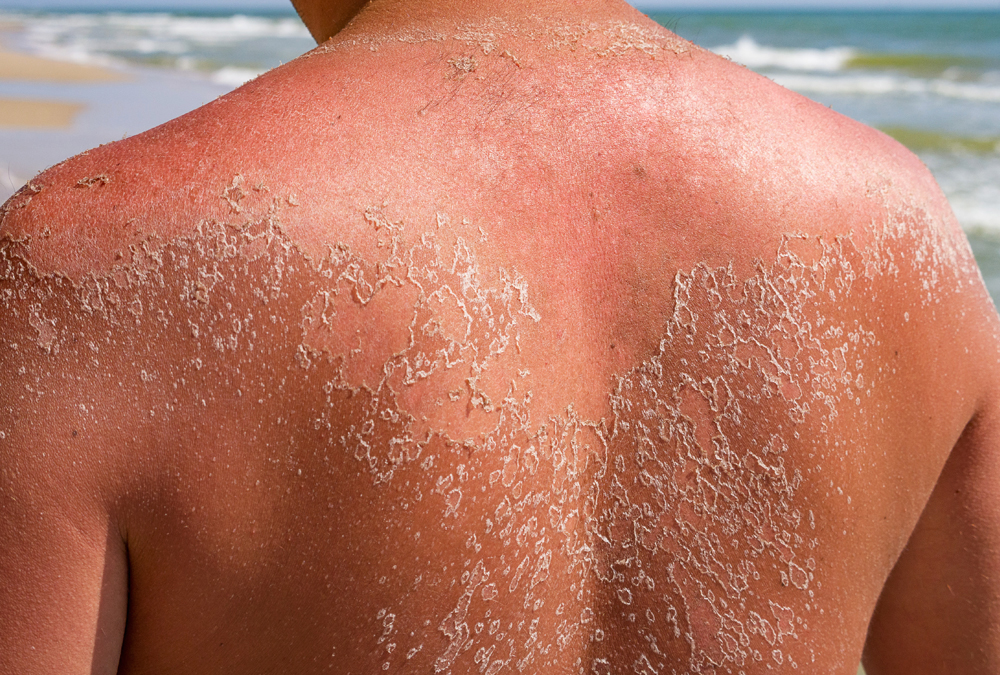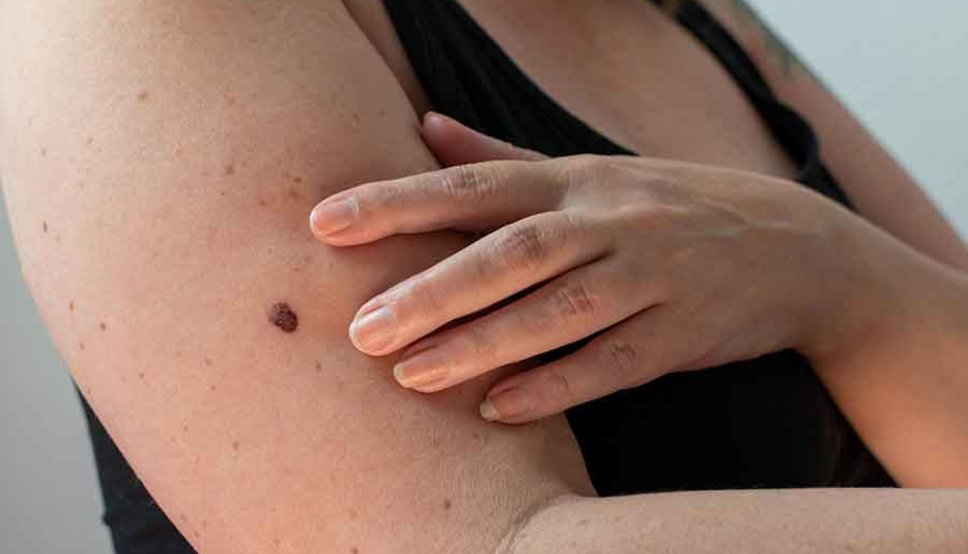Whether you’re an avid beach goer or a casual sun enjoyer, there’s nothing quite like soaking up some rays. Regular sun exposure is an excellent, natural way to get vitamin D and tan your skin.
It can even give a boost to your mental health. But, as with everything in life, it’s possible to have too much of a good thing. That’s especially true when it comes to the sun.
Repeated and prolonged sun exposure can damage your skin and lead to severe consequences.
These consequences can range from frustrating aesthetic changes to fundamental structural damage. So read on to learn what can happen to your skin if you don’t protect it from the sun.
Sunburn

A sunburn is the most common skin condition that comes from unprotected sun exposure. It’s also probably the one you’re most familiar with. However, it may come as a surprise to you that sunburn is a bit of a misnomer.
A sunburn is called a “burn” because of its similarities to a thermal burn (think from a flame or hot stove). However, unlike a thermal burn, sunburn is not caused by exposure to sunlight per se.
Rather, it’s caused by the ultraviolet (UV) radiation from the sun’s rays. And it’s your immune system’s inflammatory response to UV exposure that’s responsible for the sun “burn.”
The pain, heat, and classic inflamed red skin that you know and loathe all come from your body. And you might wonder:
“Why does my body give me so much grief for enjoying the outdoors?” It’s true that sunburn is painful in the moment. But what your body is protecting you from is far worse than a couple days of lobster skin.
Melasma
Melasma is a skin condition that causes dark, discolored patches to appear on your skin, primarily on your face.
It’s a condition that more commonly affects women, though that doesn’t mean men are immune by any means. And while hormonal changes are one major cause of melasma, sun exposure is another.
UV radiation is a known trigger of melasma. Sun exposure stimulates melanin production in your skin, the pigmentation responsible for skin color.
The more melanin your skin produces, the darker your skin tends to be. But the thing about melanin production is that it isn’t always evenly distributed along your skin. Sometimes it clusters.
In individuals with melasma, their melanocytes, the cells that produce melanin, become hyperactive. They begin to overproduce melanin, leading to dark, patchy skin clusters.
And while these benign clusters aren’t life-threatening, they can significantly alter your appearance.
Thankfully, it is possible to reverse the effects of melasma with time and medication. But it’s better to protect your skin from the sun to avoid getting it in the first place.
DNA Damage
The negative effects of UV radiation aren’t only skin deep. That is to say, there’s more to worry about than just cosmetic changes. Too much UV exposure can alter the very nature of your skin itself: its DNA.
As you might imagine, any significant changes to your DNA can be incredibly harmful to your body.
DNA is a genetic molecule that contains the instructions necessary for the development, functioning, and reproduction of an organism. It’s found in the cells of every living being.
Basically, your DNA plays an essential role in both developing your body and keeping it healthy. If your DNA becomes damaged, your body can struggle to repair itself.
And that’s exactly what happens if you expose your unprotected skin to too much sun.
When UV radiation damages your DNA, your body becomes increasingly susceptible to dangerous mutations. And these mutations can result in serious complications that may threaten your very life.
Skin Cancer

Skin cancer, as per its name, is a cancer that develops in the cells of the skin. Cancer itself is a broad term for a kind of disease characterized by the uncontrolled growth and spread of abnormal cells.
As cancerous cells grow out of control they have the potential to spread to other areas of the body. And as it spreads, the cancer can jeopardize your body’s ability to regulate and repair itself.
There are three main types of skin cancer, each with its distinct characteristics and potential risks:
Basal cell carcinoma – (BCC) is the most common form. It typically appears on areas of the skin that are regularly exposed to the sun, including the face, neck, and hands.
BCC usually grows slowly and rarely spreads to other parts of the body. However, if left untreated, it can damage nearby tissues.
Squamous cell carcinoma – (SCC) is the next most common type of skin cancer. It also tends to develop on sun-exposed areas but can arise from pre-existing skin conditions like scars, burns, or chronic ulcers.
SCC grows more rapidly than BCC and has a higher chance of spreading to nearby lymph nodes or other organs, if not detected and treated early.
Melanoma – is the most aggressive and dangerous type of skin cancer. It originates from melanocytes, the pigment-producing cells in the skin.
Melanoma can develop anywhere on the body, including areas not exposed to the sun. It often appears as an irregular, asymmetrical mole or a dark spot with uneven borders.
If melanoma is not diagnosed and treated early, it can quickly spread to other parts of the body, making it potentially life-threatening.
Because of cancer’s ability to spread and its mortality rate, its prevention and, if detected, treatment are essential. Rather than struggle to fight this deadly disease, do your best to avoid getting it in the first place.
Prioritize Prevention
As you can see, a lot can happen when you don’t protect your skin from the sun. The UV radiation from the sun’s rays can have life-changing effects on your body, both aesthetically and structurally. So it’s important to avoid getting too much sun and protect your skin when you can.
How much sun is too much? That depends on a number of factors. It depends on how light or dark your skin is. It depends on the UV index on a given day. And it depends on your history of sun exposure in the past.
In general, air on the side of caution and limit how much time you spend in direct sunlight. Wear hats, sunscreen, and UV-protecting clothes when possible.
And make sure to stay hydrated at all times, even when you’re not outdoors. Now, you don’t have to become a full-on vampire to keep yourself safe. But it’s much easier to prevent skin damage than recover from it.

Jean Smith is a fitness enthusiast and blogger who focuses on fitness and a healthy lifestyle. She is passionate about assisting people in living healthier lifestyles and is constantly on the lookout for new and creative methods to stay fit and healthy. Her articles are excellent resources for anyone interested in improving their health and fitness.
